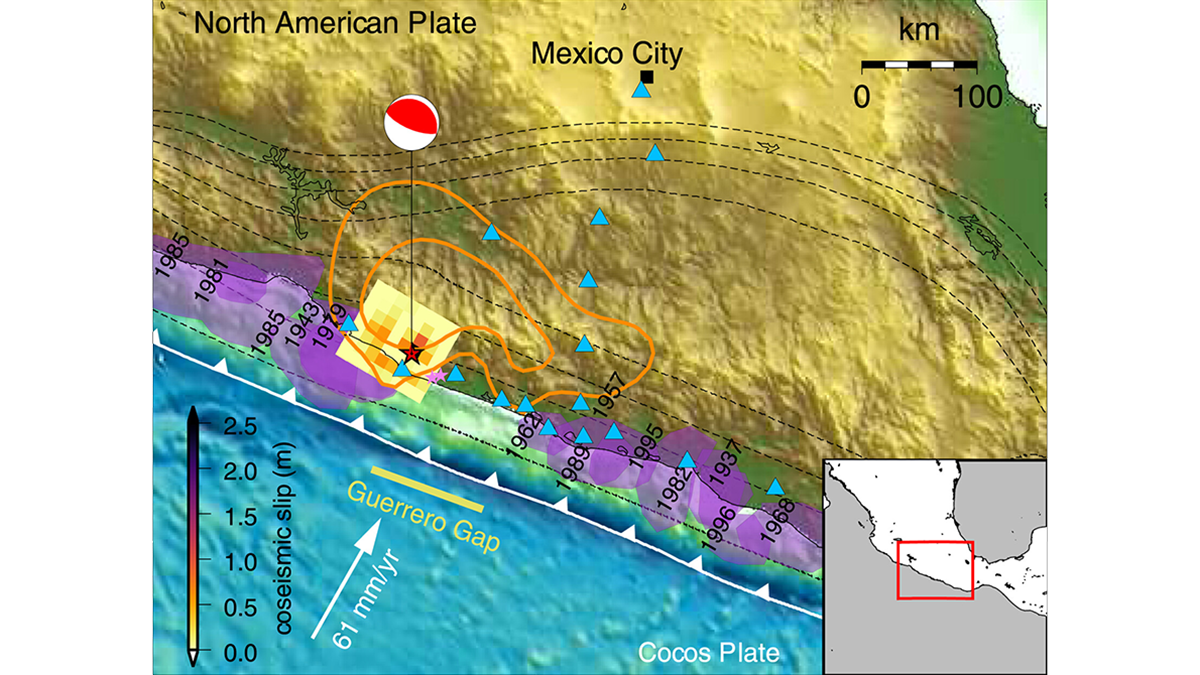Editors’ Highlights are summaries of recent papers by AGU’s journal editors.
Source: AGU Advances
Continuous geodetic and seismological monitoring provides compelling evidence that plate boundary slip involves complex slow slip events (SSEs), some of which have been identified as potential precursors to large events. However, the physical origins of SSEs and their role in advancing or delaying a future large earthquake remain unclear.
Li and Gabriel [2024] present 3D numerical models that bridge decades to seconds timescales, linking episodic cycles of SSEs and earthquake dynamics to suggest that the transient stress evolution of the 2014 Mw 7.6 SSE event may have led to the 2014 Mw 7.3 Guerrero, Mexico earthquake. These simulations highlight the importance of integrating interseismic loading, SSEs, and rapid coseismic rupture to elucidate their physical relationship.
Although these models do not yet allow prediction of the long-term connection of slow slip to future earthquakes, they provide new opportunities for further development of models that integrate geodetic and seismological data at different timescales to improve forecasting of subduction zone slip behavior.
Citation: Li, D., & Gabriel, A.-A. (2024). Linking 3D long-term slow-slip cycle models with rupture dynamics: The nucleation of the 2014 Mw 7.3 Guerrero, Mexico earthquake. AGU Advances, 5, e2023AV000979. https://doi.org/10.1029/2023AV000979
—Marcos Moreno, Editor, AGU Advances

